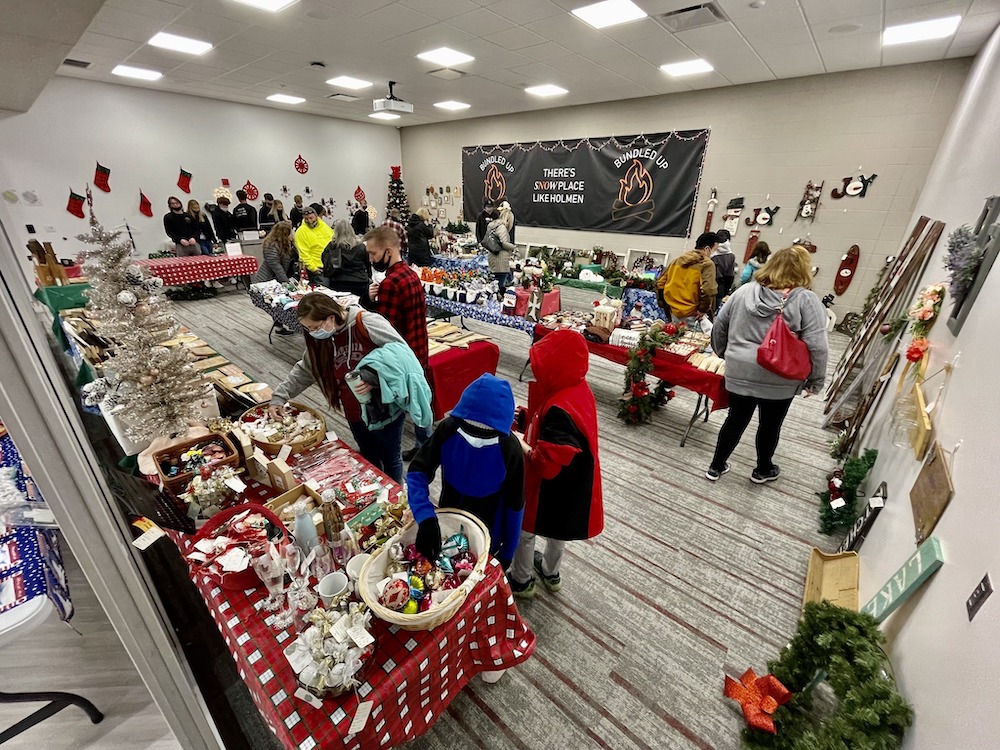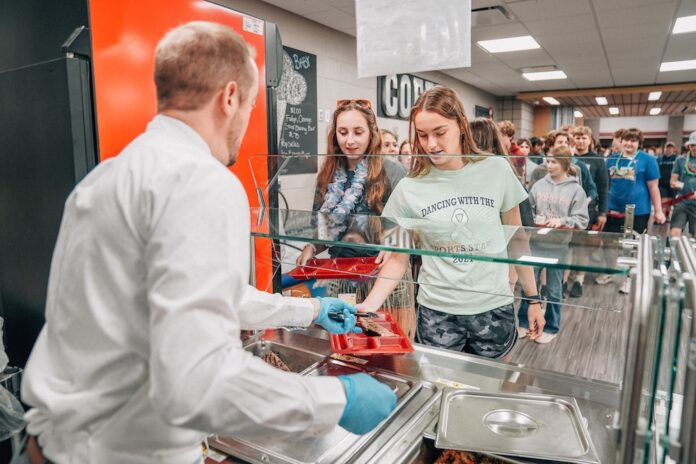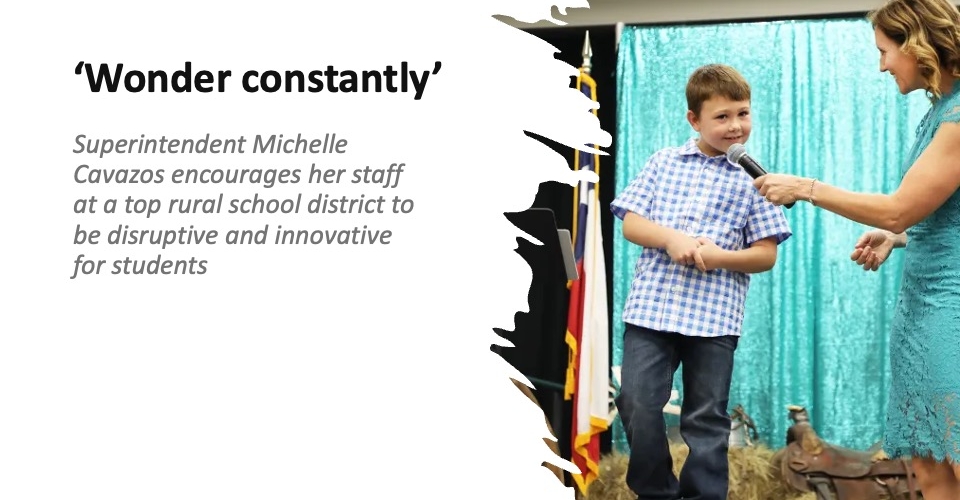“Custom” or “traditional” education is the choice at the heart of student-focused instruction in the Harrisburg School District in South Dakota. At the high school level, that means students can choose to work at their own pace in the core subjects of English, math, science and social studies or they can enroll in classes that stick to a more structured pace set by the teacher, says Travis Lape, the district’s innovative programs director.
“We’re trying to put the right kid with the right teacher at the right time,” Lape says. “If a kid really understands algebra, do they need to sit in an algebra class for an entire year when maybe they only a need semester?”
In the customized classes, students can work ahead or take a little more time in mastering skills and concepts. In math, teachers are dividing students into three groups: those who are working ahead, those who are right on schedule and those who are falling behind, Associate Principal Brad Seamer adds. “And when you walk into a science class, you’re likely to see four different labs and three independent projects taking place at the same time as the teacher moves around the room.”
Starting next year, students will be able to choose “custom” or “traditional” for specific classes rather than for their entire schedule. This means they can take customized math and traditional English.
This approach, designed to empower students, has also filtered down to the district’s middle and elementary schools, Lape points out. Middle school students have more control over scheduling their days. They can choose between small-group sessions and bigger class seminars, and rotate among teachers. Teachers and administrators, of course, monitor students’ decisions and will intervene if they are making “bad choices”—such as, Lape explains, picking all of the same classes as a friend. Along with academics, one of the goals is to help students begin developing time management and organizational skills.
In some elementary schools, grade levels have been eliminated in favor of grouping students together based on achievement so teachers are working with students who are all at the same level. This prevents a second-grade teacher from, for example, having to instruct students who are reading at fifth-grade proficiency and those who are only at a kindergarten level.
Problem-solving principals: Take a page from their playbooks
And conversations play a big role in the middle and elementary assessment process. Teachers will ask students what they can articulate about their learning, looking for key “habits of mind” such as managing impulsivity, striving for accuracy, finding humor and reflecting on their own thought processes. “When you have an 8-year-old who can articulate these things, you’ve created an environment of problem-solving, instead of having students just raise their hands and say, ‘I don’t know to do this,'” Lape concludes.
Student-focused instruction is ‘the real deal’
Student-focused instruction at Holmen High School in Wisconsin is focused outside the classroom, Principal Wayne E. Sackett says. Students in Holmen’s Farm-to-School Project are handling everything from growing produce to raising and processing poultry and cattle for the school’s lunch and nutrition programs. They use the school’s greenhouse extensively and tend to an asparagus field on school property.
Their work, part of the school’s Future Farmers of America program, translates into school culinary events such as “Winner, Winner Chicken Dinner.” “We have one of the most amazing lunch programs around,” Sackett says. “It’s giving kids real-life experiences.”

Another real-life experience on offer at the high school, which is part of the School District of Holmen, is the model store that students in an entrepreneurship class run every year around the winter holidays. And they run everything, from the stocking and staffing of the store to marketing to human resources to negotiating with sponsors and vendors. They develop a name and logo, and pick a charity or a family in need that will benefit from the store’s sales, which consist primarily of baked goods and crafts. Last year, the store raised about $14,400.
The students also develop an employee handbook, create a training program for sales staff, design an incentive program for vendors, and promote the store at school events, via social media and on local radio. “They have everything you might have in a business,” Sackett says. “It’s the real deal.”










